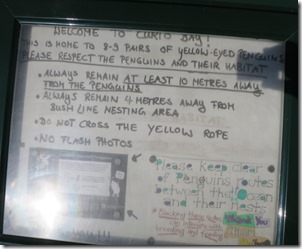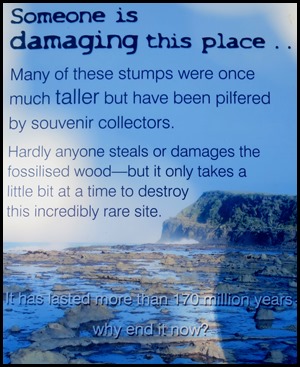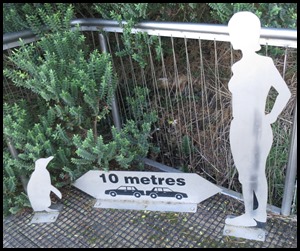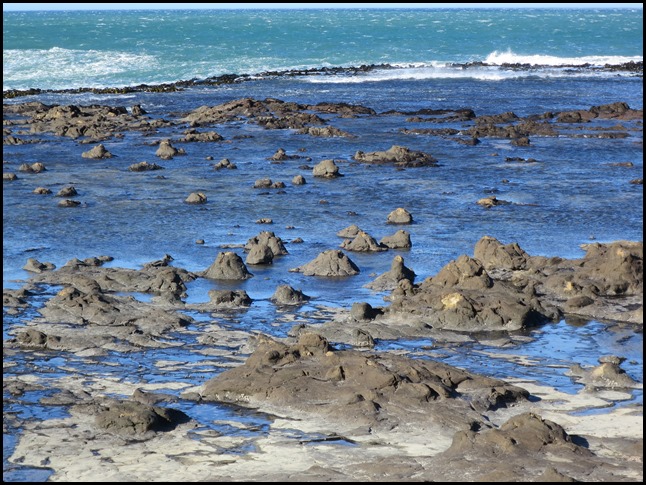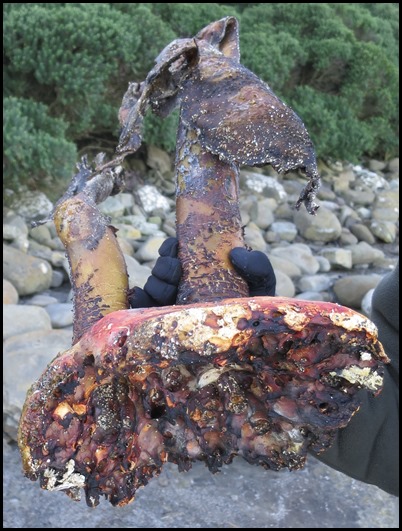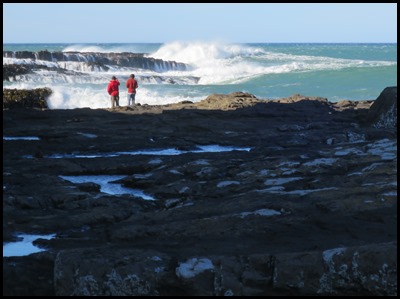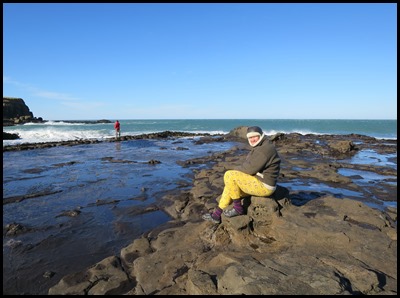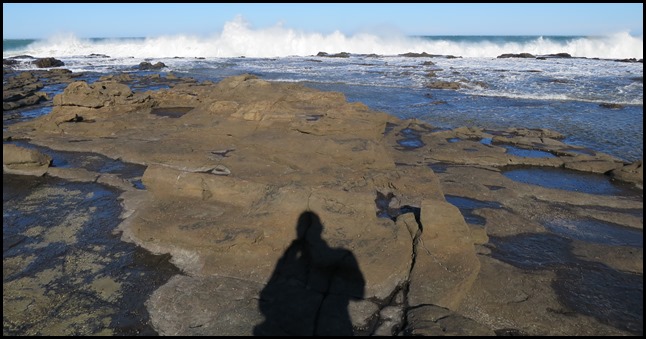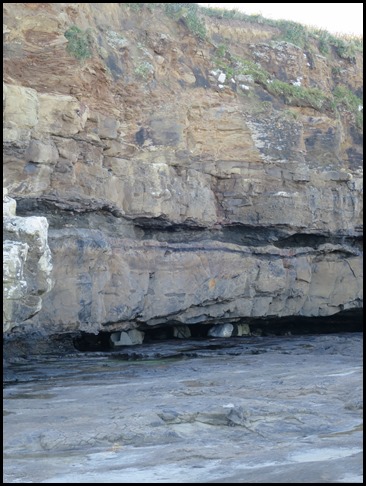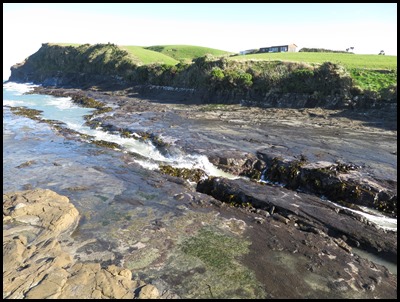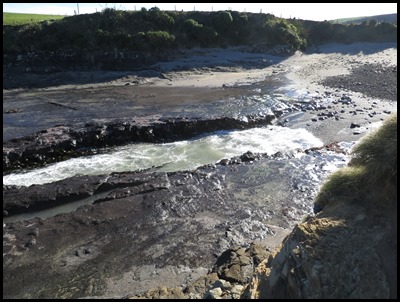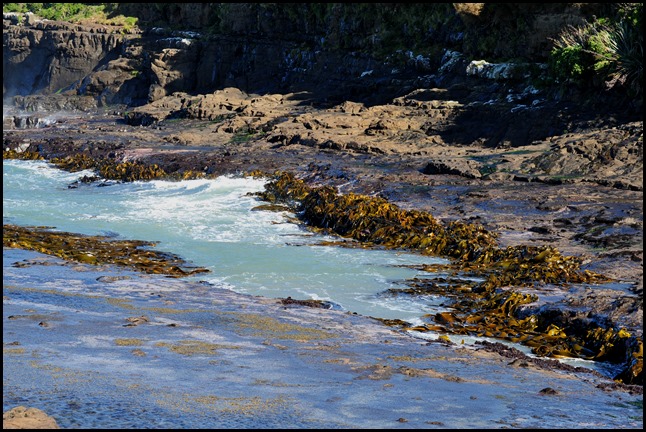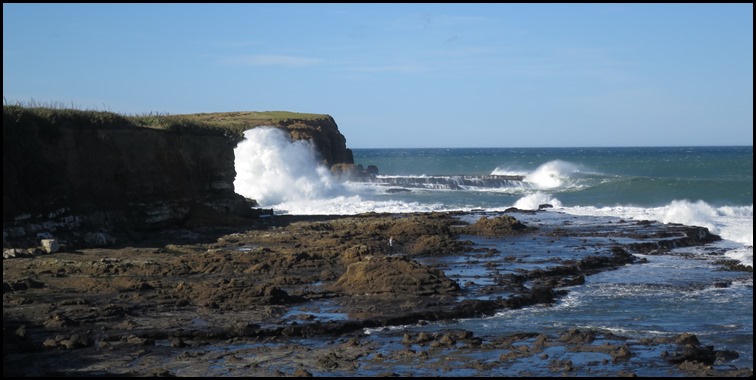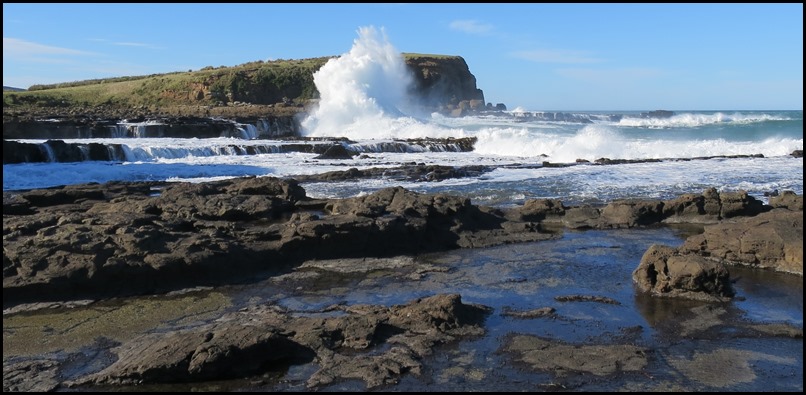Curio Bay

|
The Incredible Experience of
Curio Bay
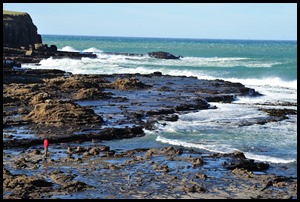 
 Located near the southern
end of New
Zealand's South
Island, Curio Bay
is a coastal embayment best known as the
site of a petrified
forest some 180 million years old. It
also hosts a yellow-eyed
penguin colony, arguably the rarest of
penguin species, with approximately 1600 breeding pairs in the extant
population. The area along with Porpoise
Bay – the bay just north, is home to the
endemic Hector's
Dolphin, and Southern Right
Whales have also been observed.
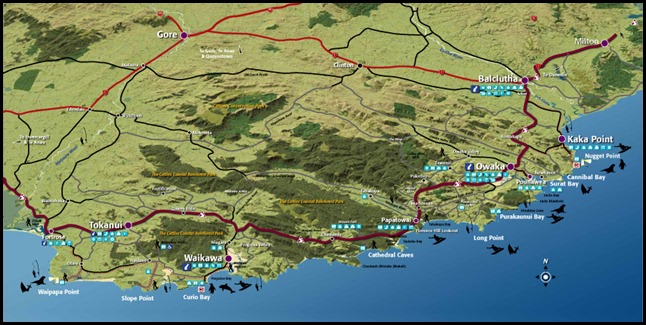 Curio Bay is one of the major
attractions in the
Catlins,
attracting around 100,000 visitors per year. The town of Waikawa has an information centre for
tourists.
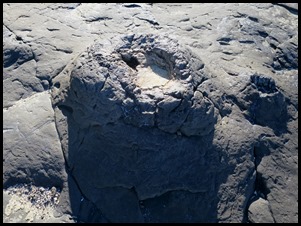 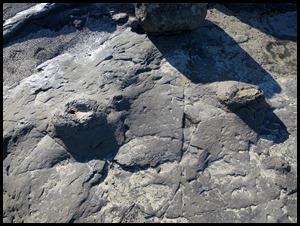  The now petrified
stumps and logs, from ancient conifers closely related to
modern Kauri and Norfolk
Pine, were buried by ancient volcanic mud flows and
gradually replaced by silica to produce the
fossils now exposed by the sea. The fossilised forest grew at a time of
semi-tropical climate and before grasses and flowering plants had come into
existence. The original forest of cycads, conifers and ferns was buried by massive floods of ash
and volcanic debris either directly from a volcanic eruption or from later heavy
rain on a barren volcanic mountain. Distinct bands of fossilised vegetation
exposed in the cliff face indicate that in between such floods, the forest grew
back at least four times over a period of some 20,000 years. Following this, the
area remained buried over millions of years. Silica started to impregnate the
wood and eventually turned it into stone, preserving not just tree stumps and
wood, but in some places also fern fronds and leaves.
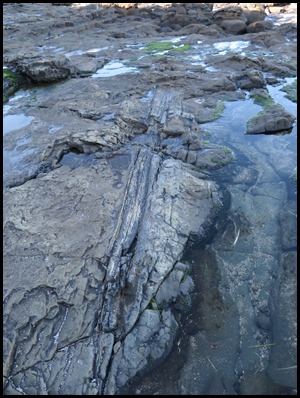 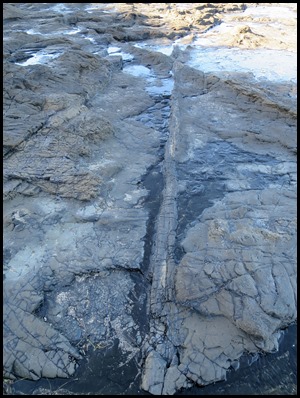 Known fossil forests of this age are very few throughout the world, and this is one of the most extensive and least disturbed of them. The overall area stretches for twelve miles from Curio Bay to Slope Point. At low tide, the remaining tree stumps and logs are exposed and clearly visible. A short walkway leads from the car park at the end of the sealed road to a viewing platform over this internationally important area.
It is strictly prohibited to damage or remove anything from the area. How sad that people have to be told by signs.
Tree Stumps.
Wiki Says: Petrified wood (from the Greek root petro meaning "rock" or "stone"; literally "wood turned into stone") is the name given to a special type of fossilized remains of terrestrial vegetation. It is the result of a tree or tree-like plants having completely transitioned to stone by the process of permineralisation. All the organic materials have been replaced with minerals (mostly a silicate, such as quartz), while retaining the original structure of the stem tissue. Unlike other types of fossils which are typically impressions or compressions, petrified wood is a three-dimensional representation of the original organic material. The petrifaction process occurs underground, when wood becomes buried under sediment and is initially preserved due to a lack of oxygen which inhibits aerobic decomposition. Mineral-laden water flowing through the sediment deposits minerals in the plant's cells; as the plant's lignin and cellulose decay, a stone mould forms in its place. The organic matter needs to become petrified before it decomposes completely. A forest where such material has petrified becomes known as a petrified forest.
I went to wave watch – own blog. Bear went in search of penguin nests, he found this rather neat, newly built detached house - staying well back in case of chicks, but the occupants were out fishing. I held the root of a piece of bull kelp, which was incredibly heavy. Bull kelp is an annual, fast growing seaweed, in warmer water up to ten feet a day, here in colder climes up to three feet a day. It produces a massive root which can hold on the the roughest seas. To see one uprooted proves quite a storm came through recently.
We walked over to the other side of the bay and took in the scenery.
Bear took this picture as the tide was turning. Now inbound.
Wind and sea damage is evident on the cliffs.
So are rockfalls.
We retraced our steps back, watched a wave come in from the sea through an eroded track right up to the beach around the corner in the tiny bay beside us. The outgoing wave shows it’s a popular growing spot for bull kelp. We climbed the stairs back up to the viewing platform and wave watched some more.
Sometimes you just have to have a person in your seascape to show the sheer size of the waves. This is a spot the person picture.
Wild sea. The noise and the wind was just incredible. ALL IN ALL A FIRST AND UNIQUE
AMAZING AND
FASCINATING
|
